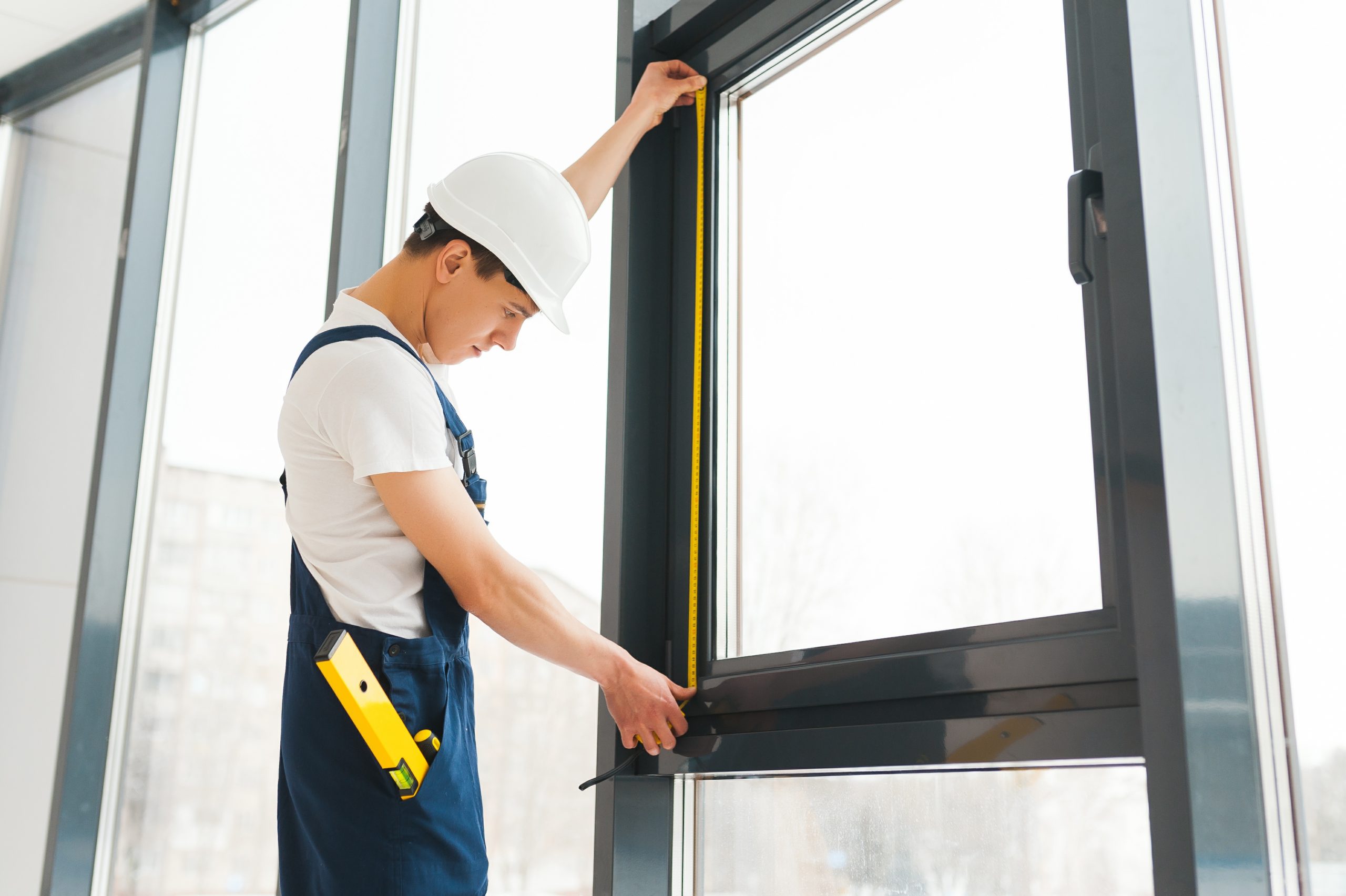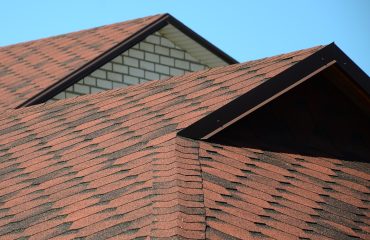
Selecting energy-efficient replacement windows is crucial to improving your home’s energy efficiency, comfort, and cost savings. With numerous options available in the market, it’s essential to consider various factors before deciding.

Window Frame Material:
- The choice of window frame material significantly impacts the energy efficiency of your windows. Different materials have varying degrees of insulation properties and maintenance requirements. Common window frame materials include wood, vinyl, fiberglass, and aluminum.
- Wood frames offer excellent insulation but may require regular maintenance to prevent rotting or warping. Vinyl frames are low-maintenance and provide good insulation. Fiberglass frames are durable and energy-efficient, while aluminum frames are less energy-efficient due to their high conductivity. Before deciding, consider each frame material’s climate, maintenance requirements, and energy efficiency.
U-Factor:
- The U-factor measures a window’s insulating ability, specifically its resistance to heat transfer. It indicates how well a window prevents heat from escaping your home. A lower U-factor indicates better insulation. Look for windows with a U-factor of 0.30 or lower to ensure energy efficiency.
- Windows with low U-factor values have improved insulation properties, reducing heat loss during the winter and heat gain during the summer. These windows help maintain a comfortable indoor temperature while reducing reliance on heating and cooling systems.
Solar Heat Gain Coefficient (SHGC):
- SHGC determines the heat from the sunshine that enters your house through the windows. A lower SHGC indicates better heat-blocking properties. Windows with low SHGC values are particularly beneficial in warm climates, where minimizing heat gain can reduce the load on air conditioning systems.
- For energy-efficient windows, Energy Star recommends an SHGC of 0.25 or lower. Such windows reduce the heat transferred from outside to inside, ensuring a more comfortable living environment and reducing the need for excessive cooling.
Low-E Coatings:
- Low-emissivity (Low-E) coatings are thin, transparent layers applied to the glass surface of windows. These coatings reduce heat transmission by reflecting infrared radiation while letting visible light through. Windows with Low-E coatings provide added energy efficiency benefits.
- Low-E coatings improve the insulation properties of windows by reflecting heat into the room during the winter and blocking unwanted heat from entering during the summer. This helps maintain consistent indoor temperatures and reduces the reliance on heating and cooling systems.
Multiple Panes and Gas Fillings:
- Replacing single-pane windows with double or triple-pane windows can significantly enhance energy efficiency. Multiple panes provide additional insulation, with air or gas-filled spaces between them acting as thermal barriers. The trapped air or gas reduces heat transfer, improving the window’s overall energy performance.
- Some energy-efficient windows feature low-conductivity gas fillings like argon or krypton between the panes. These gases enhance insulation properties and reduce heat transfer more effectively than air. When selecting replacement windows, consider those with multiple panes and gas fillings to maximize energy efficiency.
Window Design and Installation:
- Proper window design and installation play a vital role in the overall energy efficiency of replacement windows. Look for windows with airtight seals, quality weatherstripping, and well-insulated frames. These features prevent air leakage and minimize drafts, ensuring better insulation and energy savings.
- Professional installation is highly recommended to ensure replacement windows are properly fitted and sealed. Poor installation can lead to air leaks, reducing the energy efficiency of even the most advanced windows. Hiring a reputable window replacement service, such as Best Enterprises General Contracting, ensures the windows are installed correctly, maximizing their energy-saving potential.
Energy Star Certification:
- Look for replacement windows that are Energy Star certified. Energy Star is a program by the U.S. Environmental Protection Agency (EPA) that identifies energy-efficient products. Energy Star windows meet specific performance criteria, ensuring energy efficiency and quality.
- The Energy Star label assures consumers that the windows have undergone rigorous testing and adhere to industry standards for energy efficiency. Making an informed choice by selecting Energy Star-certified windows gives you confidence in their performance.
What to consider when installing energy-efficient replacement windows?
Installing the right energy-efficient replacement windows involves carefully considering various factors that can greatly impact your home’s energy performance. You can make informed decisions that maximize energy savings and improve overall comfort by considering specific local climate considerations, window orientation, and your budget. Understanding how these factors play a crucial role in selecting the appropriate windows will ensure that you create an energy-efficient and sustainable living environment.

Local Climate Considerations:
- Consider your area’s climate and weather conditions when selecting energy-efficient replacement windows. Factors such as temperature ranges, humidity levels, and prevailing winds can influence the type of windows that will provide the most energy efficiency for your region.
- For instance, windows with low U-factor values in colder climates are essential to prevent heat loss, while in hotter climates, windows with low SHGC values are crucial to reducing heat gain. Considering local climate conditions ensures your windows are optimized for energy efficiency and comfort.
Window Orientation:
- Consider the orientation of your windows concerning the sun. South-facing windows receive more direct sunlight, so using windows with low SHGC values in these areas can help reduce heat gain. On the other hand, North-facing windows may benefit from higher SHGC values to maximize natural light and heat gain during colder months.
- Understanding the sun’s path and the specific climate of your location allows you to select windows that optimize energy efficiency based on their orientation.
Budget:
- While energy-efficient replacement windows may have a higher upfront cost, they offer long-term energy savings and other benefits. Evaluate the cost-effectiveness of the windows based on their energy performance and expected savings over time. Consider potential energy bill reductions, improved comfort, and increased home value.
- Remember, investing in energy-efficient windows is a long-term investment that can provide significant returns through energy savings and improved living conditions.
Conclusion
Choosing energy-efficient replacement windows involves considering multiple factors that impact their performance and energy-saving potential. Factors such as window frame material, U-factor, SHGC, low-E coatings, multiple panes, gas fillings, window design and installation, window orientation, Energy Star certification, local climate considerations, and budget should all be carefully evaluated.
You can trust Best Enterprises General Contracting for the best window replacement service and expert advice on choosing energy-efficient windows. Their team of pros might guide your choice procedure, ensuring you make an informed decision that meets your needs and maximizes energy efficiency in your home. You can enjoy enhanced comfort, reduced energy consumption, and long-term savings by selecting the right energy-efficient replacement windows.



